
Rwanda & Uganda:
Chapter six
A day on Lake Mutanda, Uganda.
The Chameleon Hill Forest Lodge sits above the lake, and I spend each morning sitting on the terrace gazing out over its surface. WIthin the lake there are 17 islands, 13 of which are semi-inhabited. Two hundred species of birds call this area home, and I can hear their songs throughout the day.
In the distance you can see the Virunga Mountains: Mt. Muhabura, the guide, and Mt. Sabinyo, named for its serrated peaks that resemble old man’s teeth. Of the eight volcanoes you can see six on a clear day. Two of the volcanoes are active in the Congo. Many days the peaks are shrouded in clouds. This morning, it’s clear, but the clouds will roll in soon.

I’ve decided to take it easy on my last full day in Uganda. I take a late, leisurely breakfast in preparation for a dugout canoe exploration of the lake. I’m the only one in the dining room at this hour; an overall peacefulness has settled over the lodge and the lake.
At the appointed time Herbert meets me at my cabin. He’s here to walk me to the dock and the awaiting canoe. It’s about a 200 meter descent to the lake and we follow criss-crossing paths on the way down. From across the valley I hear a child call out to me. I wave and watch as he kicks dust up around his feet in an impromptu dance.




As we walk Herbert points out various plants for pain relief, to ward off mosquitoes, to combat malaria. At one point he grinds up leaves in his hands to extract the juice, which he applies liberally to his hands and arms.


Franklin meets us at the dock. The canoe is long and thin and feels unbalanced, but it’s not as I’ll discover later. Wooden seats are placed within and I’m invited to sit. A life jacket is provided and a paddle. And soon we’re off on the lake, paddling towards the islands. A wind has picked up and the water is slightly choppy; it’s difficult to paddle from my position in the canoe and after a spell I leave it to the professionals. Herbert and Franklin sit alongide the edges giving them better leverage. I think about how nice it would be to have a small sailboat to guide along the surface and between the islands.



We guide the canoe to Toyo island where we alight. I hadn’t planned on a hike, but here we are. It’s the third largest island in the lake and Herbert guides me along the edge, past fields before making a path that climbs and hugs the hill until we find its highest point, backtracking at one point when he finds one path overgrown.

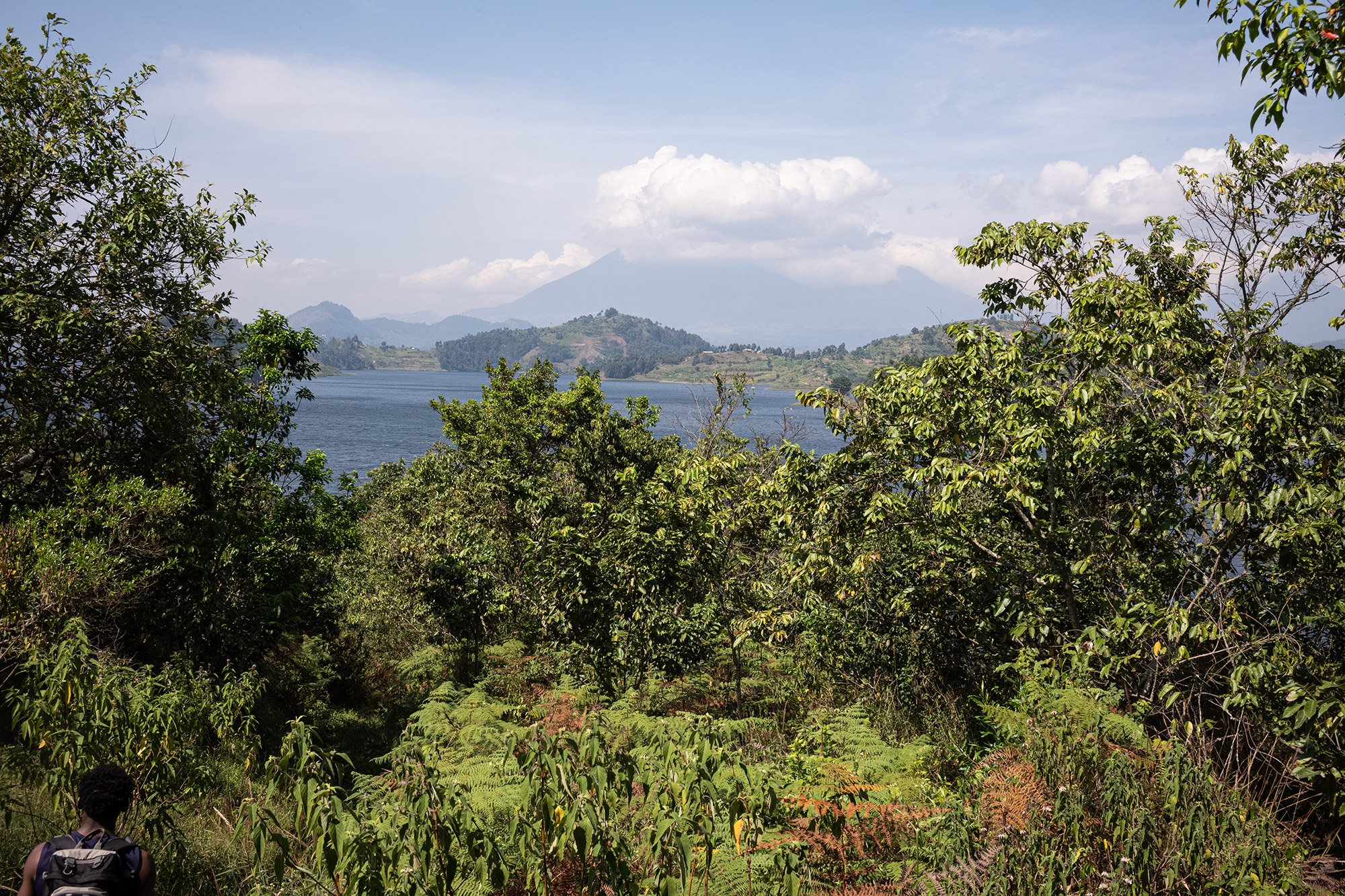
As we walk, he points out the flora and fauna of the island. A flame tree, wild blackberries, a pig. There’s a cone of seeds on the ground and he picks it up. He’s not sure what it is and wants to take it back to the mainland to identify it.





At the opposite end of the island he leads me to a 500-year-old fig tree. It’s the oldest in the area and sacred to those that live around the lake. In August they come to pray.
We stand in the stillness of its massive trunk and listen to the sounds around us. The wind in the leaves, the birds everywhere around us, the water that surrounds us.


On the hike back he points out a field of climbing beans. I’ve seen rows and rows of them alongside the roads and am happy to get a closer look. I ask if they eat the pods whole and he says no. They’re shucked and splits a pod to show me the white beans inside.


Our walk back is easier, along a path that runs along the summit of the island. There are views of the volcanoes and, in the middle of the island, a small shack. There’s remnants of a fire and a meal of roasted fish outside. A place to shelter from the elements and the sun.
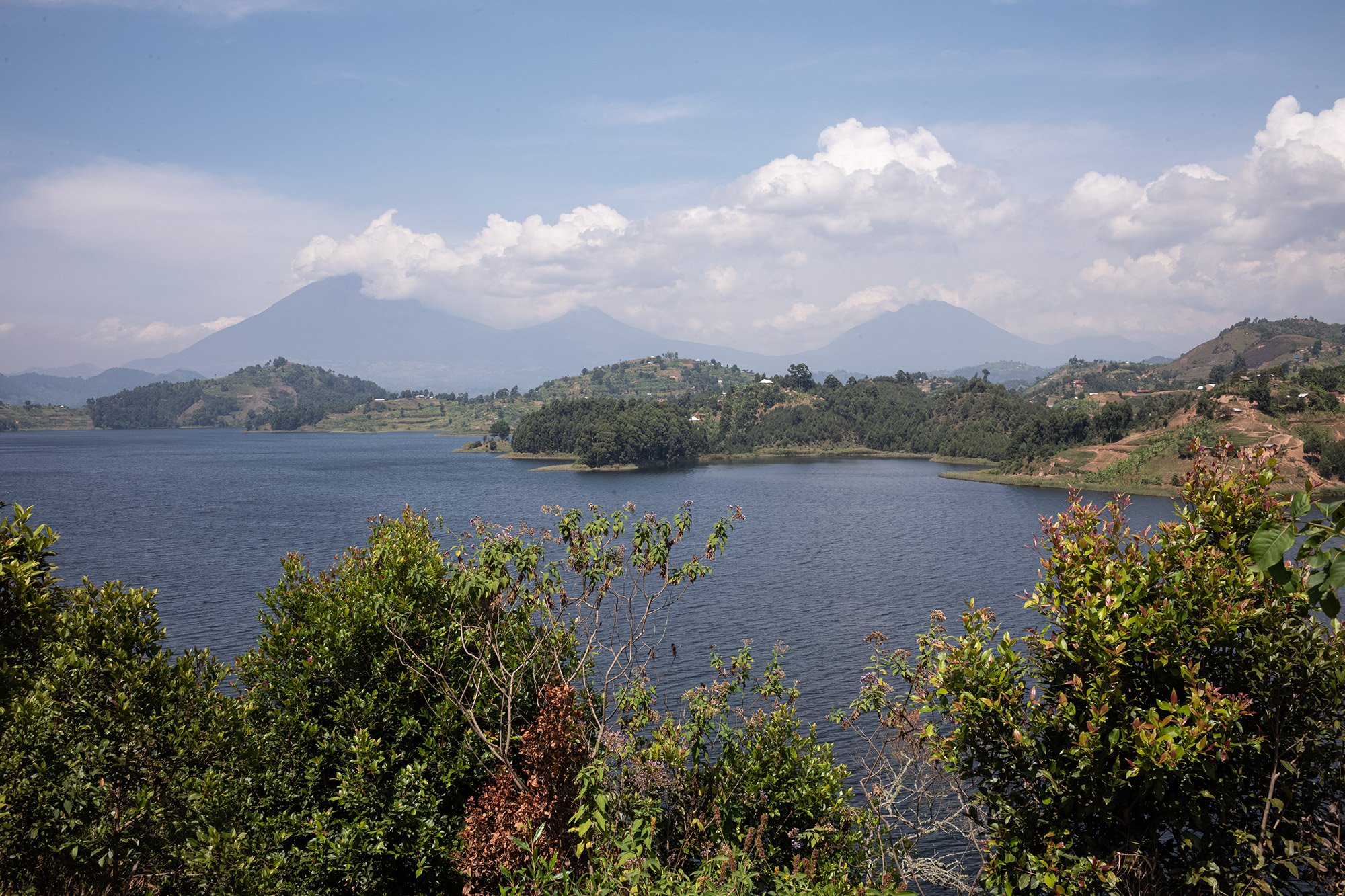
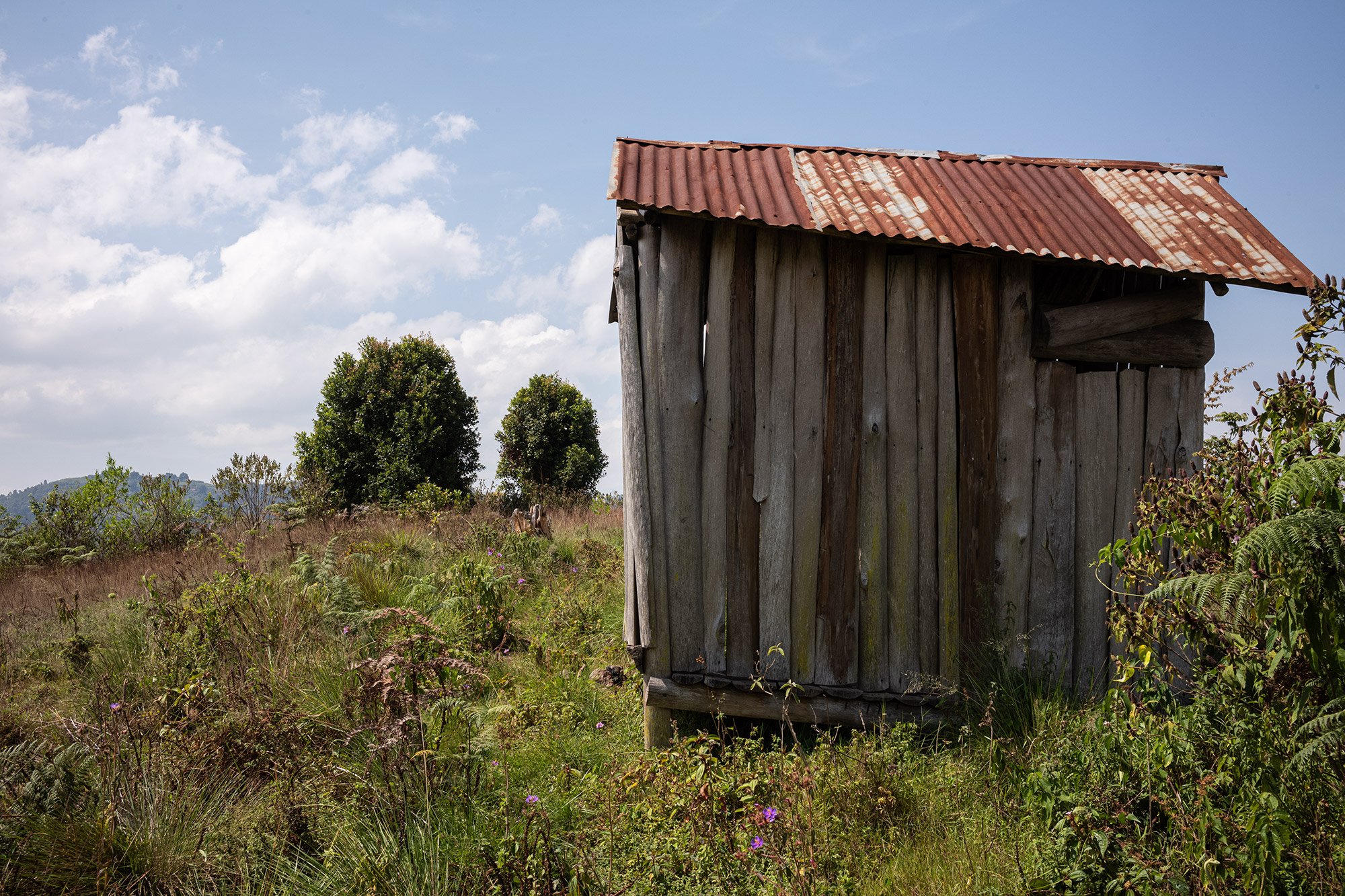

We walk back to the canoe through a forest of trees. Along the way, Herbert points out a local beehive. I’ve seen them in the trees on the road from Kigali and I’m happy for a closer look. I hear no bees and wonder if it’s been newly set, awaiting its queen.

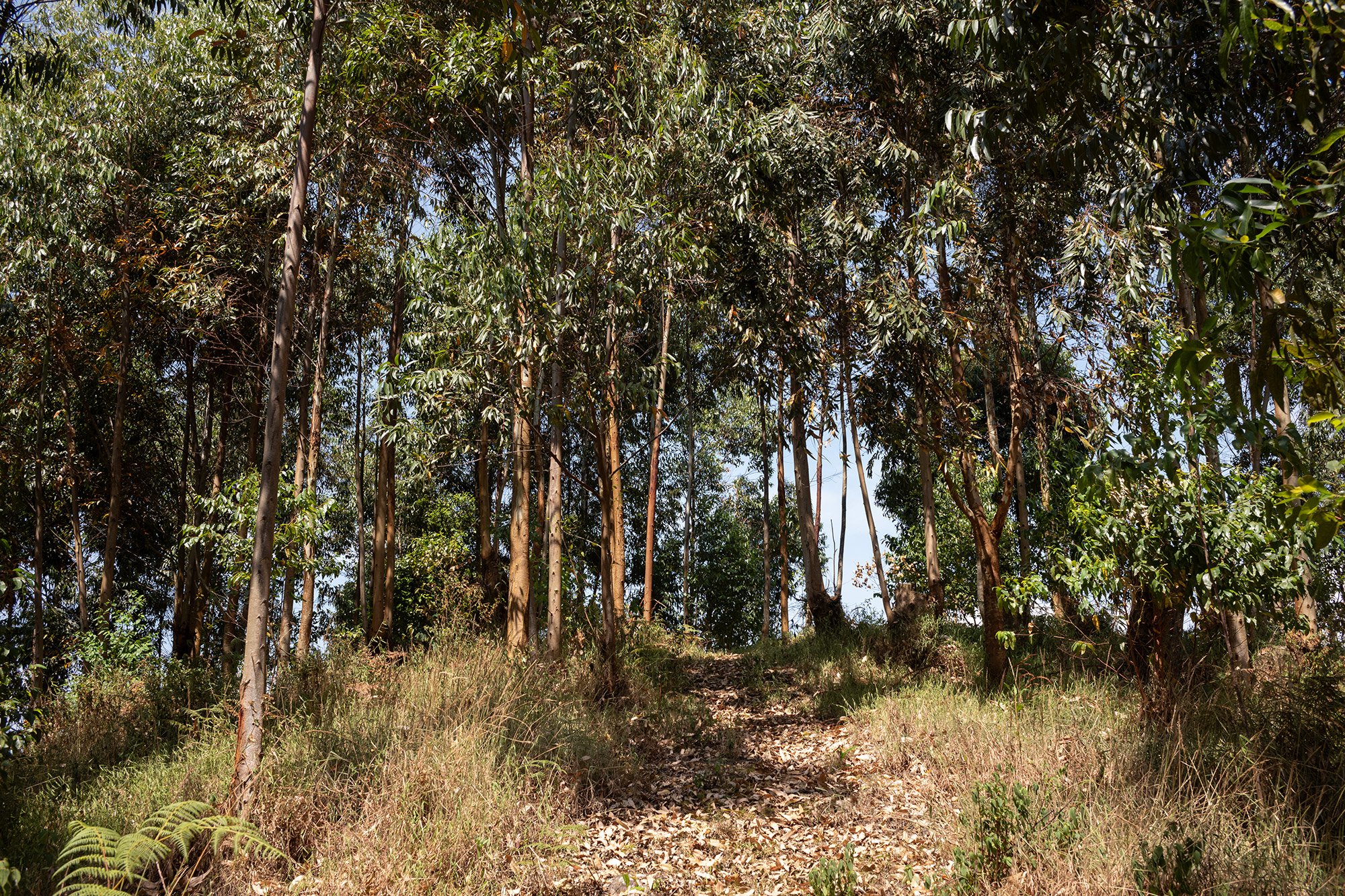
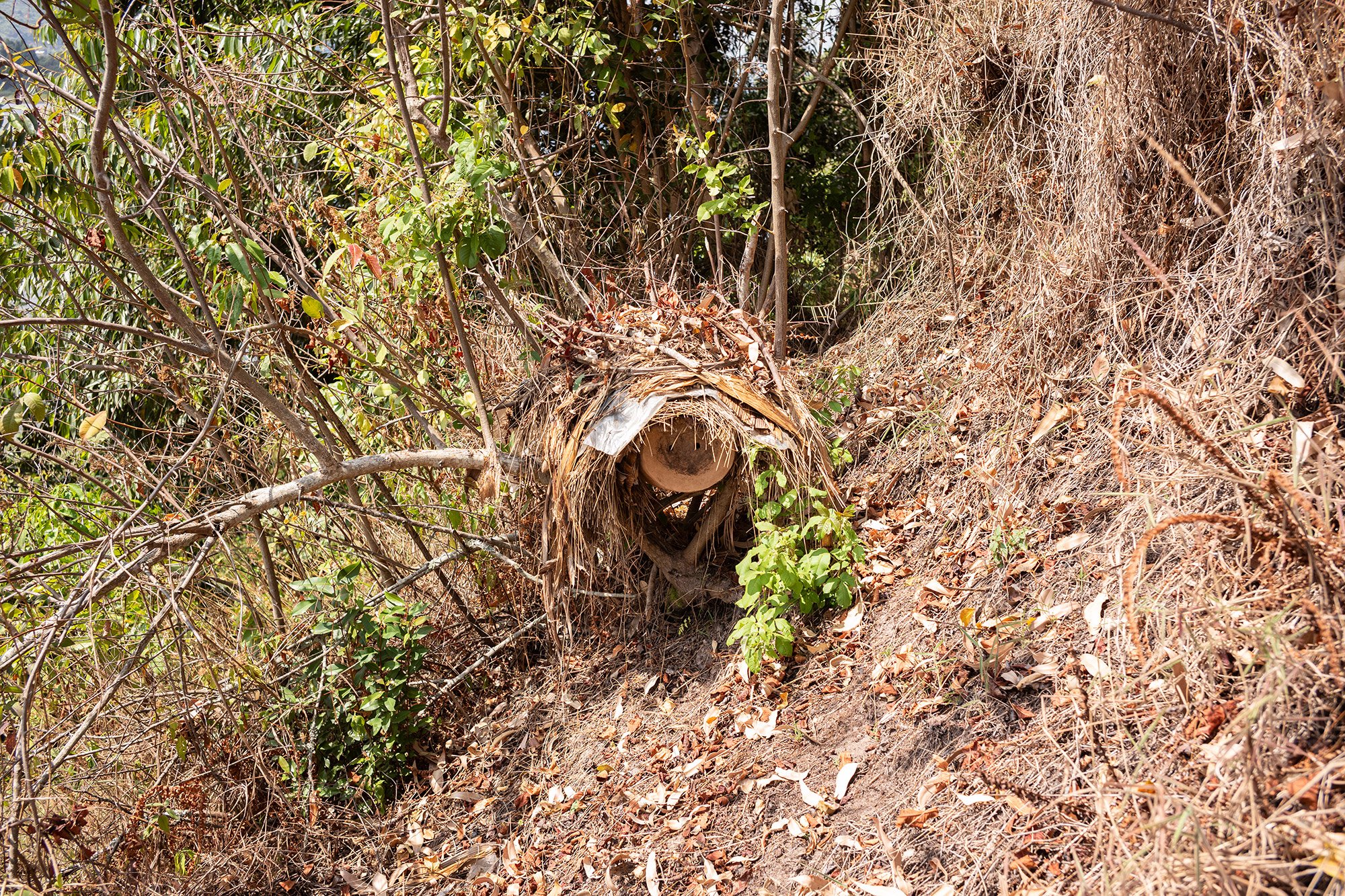
Back at the canoe we head home, the wind at our backs. As we near the sheltered cove where the lodge has its dock I ask if we can swim. It’s warm under the sun after our hike. Herbert says yes, and I doff my clothes. Climbing onto the bow of the canoe, I’m surprised at how stable it is, Herbert’s wobbling notwithstanding. I stand and dive, breaking the now-still surface of the lake.
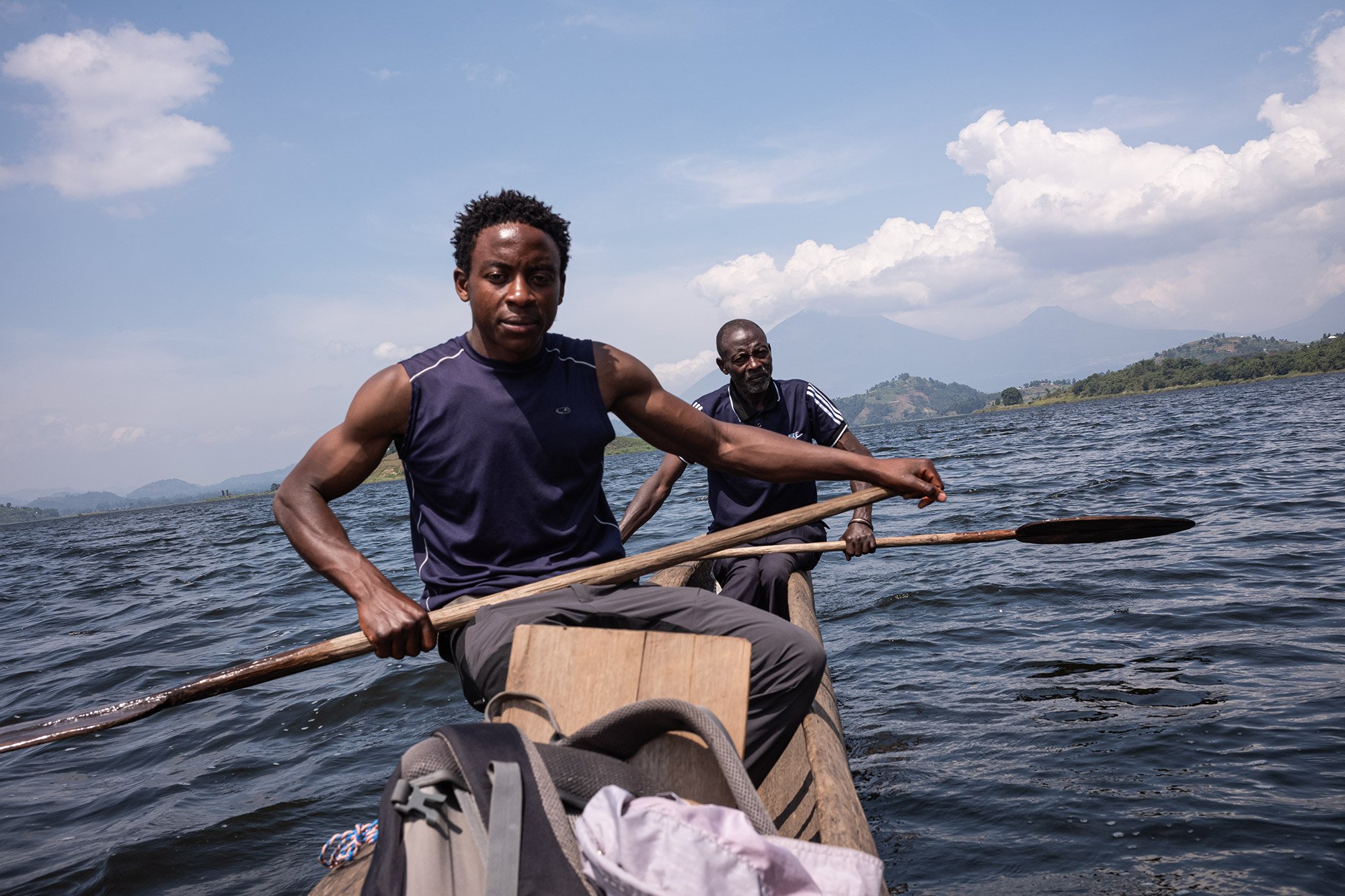
Herbert follows me into the water and we end up swimming back to the dock. Franklin guides the canoe after us.
On the dock we let the sun dry our bodies before we clothe ourselves. Franklin lingers. After we unload the canoe he pushes off and paddles back into the lake towards the volanoes on the horizon.

For lunch, I’ve chosen the local food, a dish of stewed climbing beans, green plantains, and potatos with a fresh avocado and pepper salad. The plantains taste like potatoes and the beans are seasoned in a delicious tomato-based broth that delivers a slight kick. It’s delicious.

As I eat, Tony the cat threads his way between my legs and the legs of the table and chair. I lean down to pet him and he sprawls on his back, accepting head rubs and batting at my hands as I reach towards his belly.
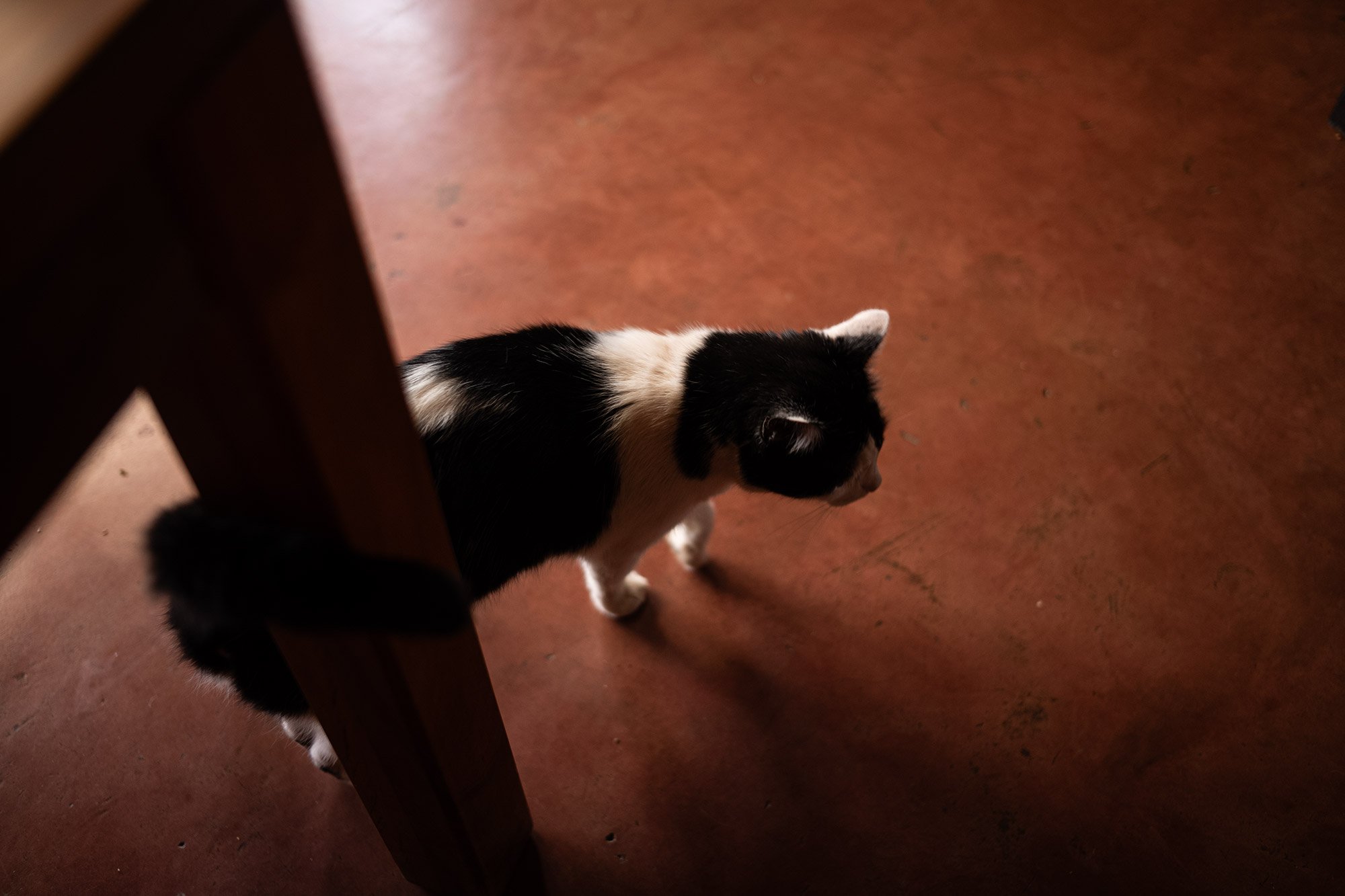
The next morning I’ll take a kayak out past the nearest islands towards the middle of the lake. I won’t be able to resist the pull of the water. And as my mind drifts upon the gift of the past two weekends, I’ll slip from the kayak into the cool embrace of the lake, surrounded by hills under the watchful gaze of Mt. Muhabura, our guide.
18 June 2023
🇺🇬







